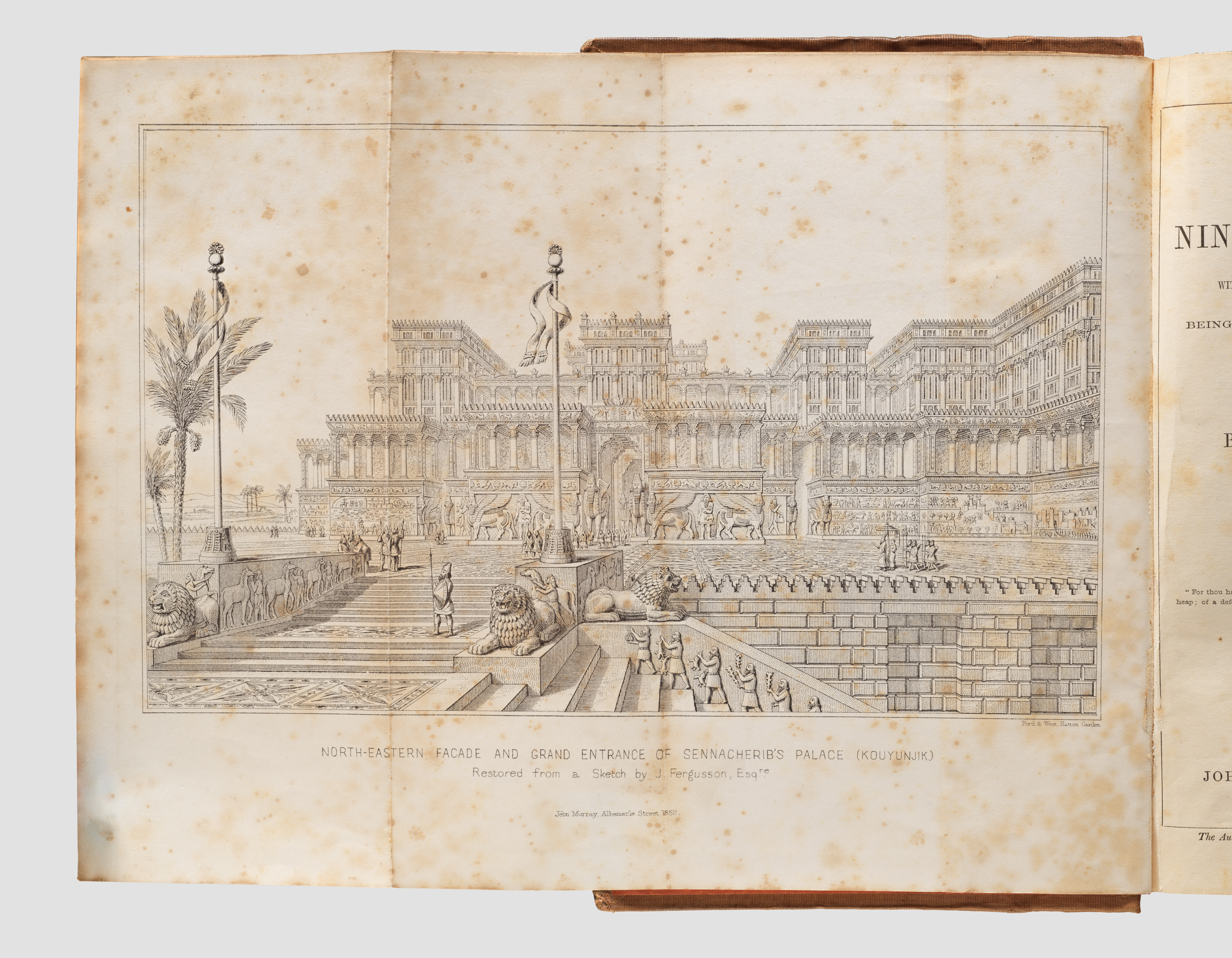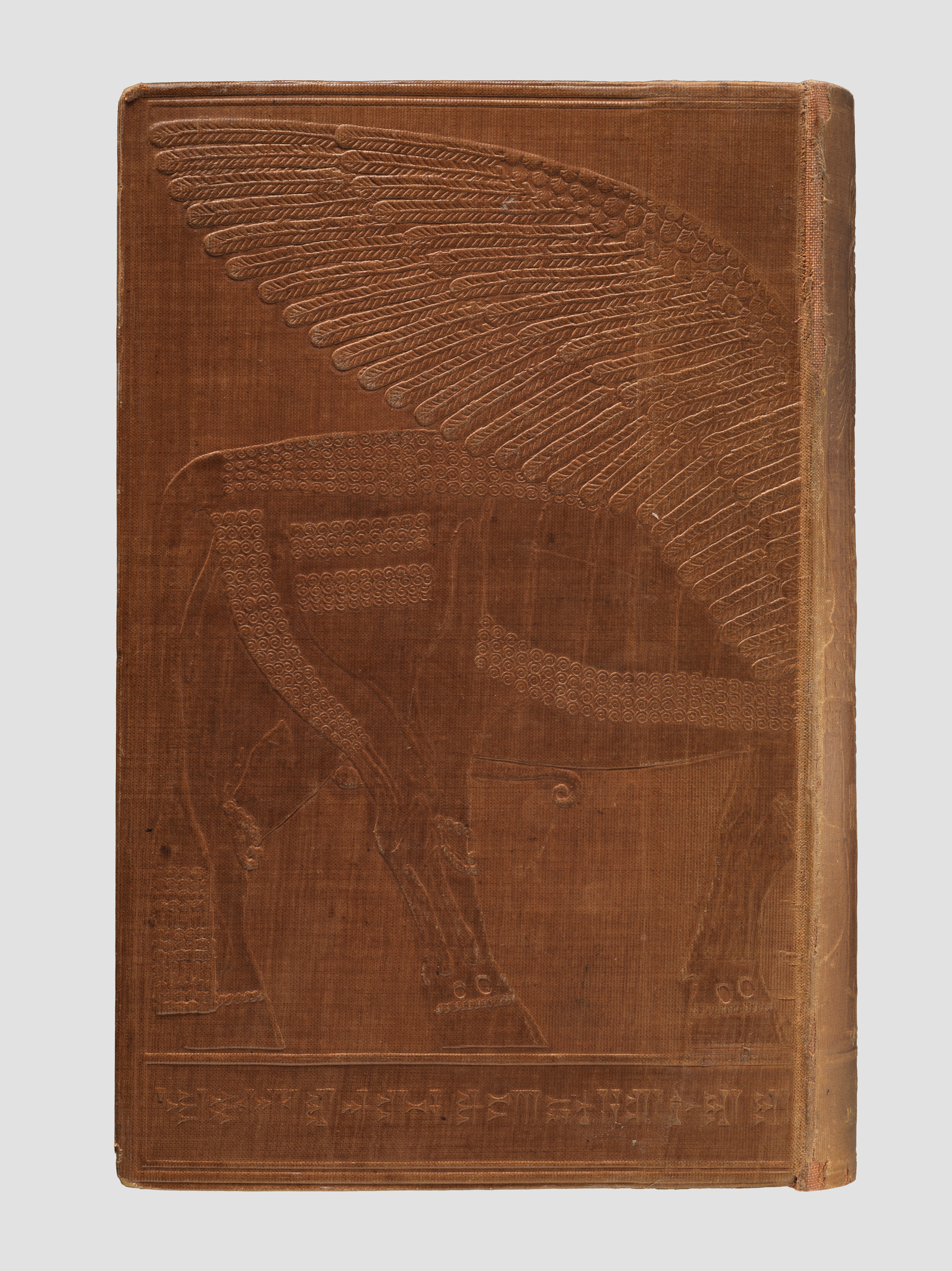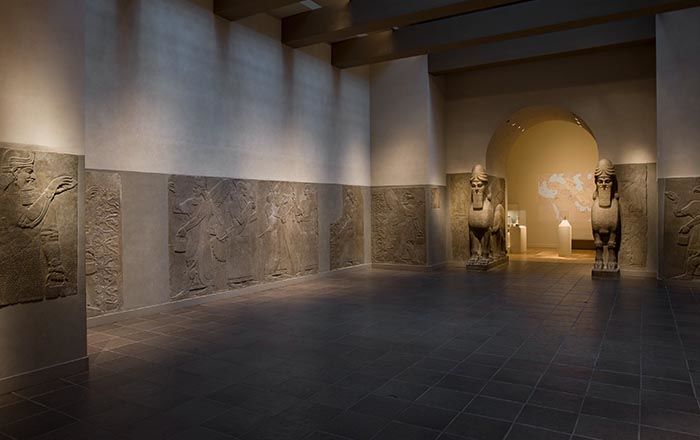Discoveries in the Ruins of Nineveh and Babylon, with Travels in Armenia, Kurdistan and the Desert
Not on view
In the middle of the nineteenth century, French and British excavators uncovered the remains of ancient Assyrian palaces around Mosul in northern Iraq. The main British excavator at Nimrud (ancient Kalhu) and then Nineveh was Austen Henry Layard, a young English traveler who was inspired by Paul-Émile Botta’s first discoveries at Khorsabad (ancient Dur-Sharrukin) and began to excavate, supported by Stratford Canning, the British ambassador to Constantinople (today Istanbul). Like Botta, Layard found the remains of ancient Assyrian palaces whose walls were lined with stone reliefs depicting the king and courtiers, supernatural figures, military scenes, and royal hunts, and whose important gateways were flanked by colossal human-headed winged bull and lion sculptures. Although it was not clear at first which was the real site of biblical Nineveh, Layard and Botta assumed correctly that the palaces they were excavating were those of the Neo-Assyrian empire of the ninth to seventh centuries BCE, which previously had been known only through biblical and Classical tradition.
What Layard found was of interest not only to scholars but to a wide European public because of the biblical connections of ancient Assyria. The popular Illustrated London News covered the excavations in detail, and when Layard’s own first book, Nineveh and Its Remains (2023.712a, b), was published in 1849, it became one of the best-selling books of its time. In addition to the two-volume original, several abridged and cheaper editions were produced, increasing its readership still further. At the same time, Layard shipped many of the sculptures themselves to England, the majority to the British Museum, where they were the subject of further public fascination. In 1854, a colorful reconstructed ‘Nineveh Court’ was part of the Sydenham Crystal Palace, visited by millions of people until it was destroyed in a fire in 1866. Layard himself was heavily involved in the design.
Discoveries in the Ruins of Nineveh and Babylon followed on from Nineveh and Its Remains, describing Layard’s work at the mounds of Kuyunjik and Nebi Yunus, which at that time lay across the River Tigris from the city of Mosul (today they are enclosed by the much larger modern city). These were the mounds of ancient Nineveh itself (whereas the focus of Nineveh and Its Remains, Nimrud, was actually ancient Kalhu, biblical Calah). At Nineveh, Layard excavated at what is today called the Southwest Palace, Sennacherib’s ‘Palace Without Rival’, where many of the reliefs depicted that king and his successors’ military campaigns. The book also describes his work at Babylon in southern Iraq, another ancient city with enormous biblical and classical resonance for a European readership. Following earlier descriptions and making smaller excavations of his own, Layard struggled to begin to make sense of the enormous site, and he saw no evidence of stone palace reliefs similar to those he had found in Assyria. Although nineteenth-century excavations would collect large numbers of cuneiform tablets from Babylon, the mud-brick architecture of its palaces and temples would require much more careful excavation techniques that were only developed by German and Iraqi excavators there in the early twentieth century.
This image cannot be enlarged, viewed at full screen, or downloaded.
This artwork is meant to be viewed from right to left. Scroll left to view more.






